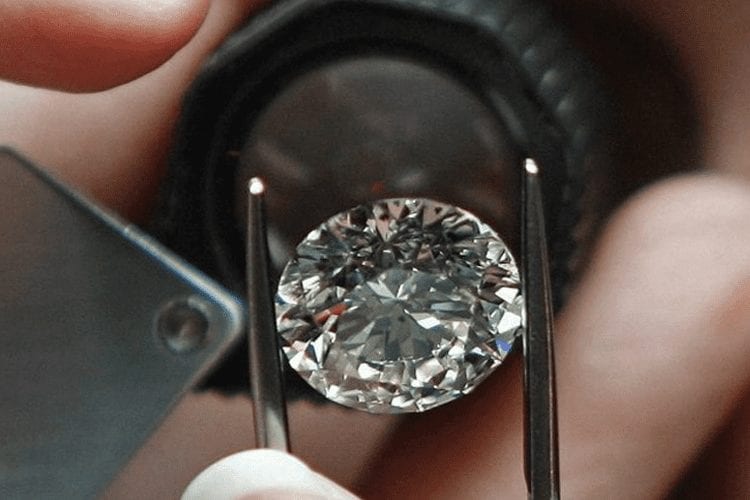Introduction to Lab-Grown Diamonds
In recent years, lab-grown diamonds have revolutionized the jewelry industry, offering consumers a sustainable and ethical alternative to mined diamonds. But what exactly are lab-grown diamonds, and why are they becoming increasingly popular?
What are Lab-Grown Diamonds?
Lab-grown diamonds, also known as synthetic or cultured diamonds, are created in controlled laboratory environments using advanced technological processes that mimic the natural conditions under which diamonds form in the Earth’s crust Lab diamond initials. These diamonds have the same physical, chemical, and optical properties as natural diamonds, but they are grown under highly controlled conditions.
How are Lab-Grown Diamonds Created?
The process of creating lab-grown diamonds typically involves two main methods: High Pressure High Temperature (HPHT) and Chemical Vapor Deposition (CVD). HPHT mimics the natural diamond formation process by subjecting carbon to extreme pressure and temperature, while CVD involves depositing layers of carbon atoms onto a substrate to grow diamond crystals.
Benefits of Choosing Lab-Grown Diamonds
One of the primary advantages of lab-grown diamonds is their environmental sustainability. Unlike mined diamonds, which require extensive mining operations and can have a significant ecological footprint, lab-grown diamonds have a minimal impact on the environment. They also offer ethical benefits, as they are not associated with issues such as conflict diamonds or exploitative mining practices.
Quality and Characteristics
Quality Comparison with Natural Diamonds
In terms of quality, lab-grown diamonds are virtually indistinguishable from natural diamonds to the naked eye. They possess the same brilliance, sparkle, and hardness as natural diamonds, making them a desirable choice for fine jewelry.
Physical Properties of Lab-Grown Diamonds
Lab-grown diamonds exhibit identical physical properties to natural diamonds, including their hardness (measured on the Mohs scale), refractive index, and thermal conductivity. These properties ensure that lab-grown diamonds are durable and suitable for everyday wear.
Grading and Certification Standards
Lab-grown diamonds are graded using the same standards as natural diamonds, including the 4Cs—cut, color, clarity, and carat weight. Leading gemological institutes such as the Gemological Institute of America (GIA) and the International Gemological Institute (IGI) provide certification for lab-grown diamonds, ensuring transparency and trust in the market.
Environmental and Ethical Impact
Environmental Sustainability of Lab-Grown Diamonds
One of the most significant advantages of lab-grown diamonds is their minimal environmental impact. Unlike traditional diamond mining, which can lead to deforestation, habitat destruction, and soil erosion, lab-grown diamonds are produced with significantly lower energy consumption and greenhouse gas emissions.
Ethical Considerations Compared to Mined Diamonds
Lab-grown diamonds are also ethically superior to mined diamonds. They are not associated with the issues of forced labor, human rights abuses, or conflict financing that have plagued the diamond mining industry in certain regions of the world. Choosing lab-grown diamonds allows consumers to make a socially responsible choice without compromising on quality or beauty.
Industry Regulations and Compliance
The production and sale of lab-grown diamonds are regulated by industry standards and guidelines to ensure ethical practices and consumer protection. Organizations such as the Diamond Producers Association (DPA) and the Responsible Jewellery Council (RJC) advocate for transparency and ethical sourcing throughout the diamond supply chain.
Cost and Affordability
Pricing Factors for Lab-Grown Diamonds
While lab-grown diamonds offer many advantages over natural diamonds, including their ethical and environmental benefits, they are also more affordable. The cost of producing lab-grown diamonds is lower than mining and extracting natural diamonds from the Earth’s crust, making them a cost-effective option for consumers.
Lab made diamonds, also known as synthetic or cultured diamonds, are created through advanced technological processes that replicate the natural conditions under which diamonds form in the Earth’s mantle.
Cost Comparison with Natural Diamonds
On average, lab-grown diamonds are priced at approximately 20% to 40% less than natural diamonds of comparable quality. This price differential makes lab-grown diamonds an attractive choice for budget-conscious consumers who are looking for a high-quality diamond at a more accessible price point.
Market Trends and Price Stability
The market for lab-grown diamonds has experienced significant growth in recent years, driven by increasing consumer awareness of ethical and sustainable practices. As more consumers seek alternatives to traditional mined diamonds, the demand for lab-grown diamonds continues to rise, leading to greater market acceptance and price stability.


